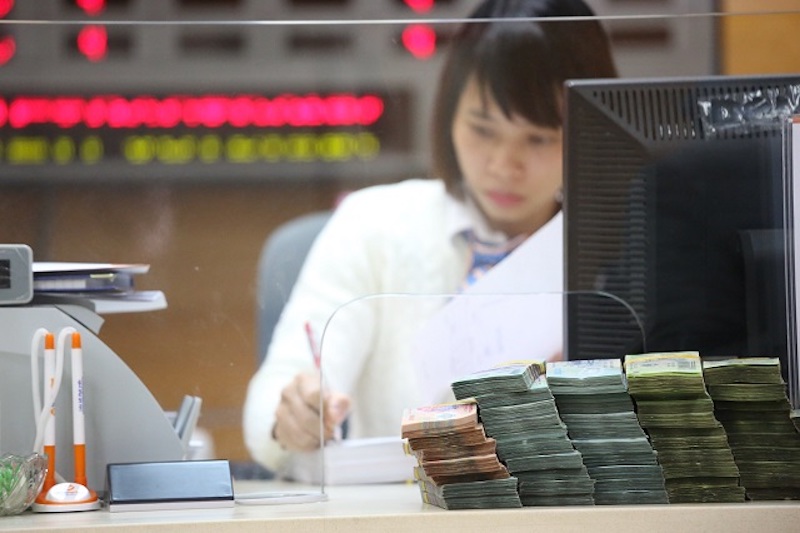Vietnam’s banking sector in 2020: profitability and vulnerability are higher
Despite challenges, Vietnam's banks are nearly approaching their full-year targets but the risk provision pressure remains great.
Preliminary business results of commercial banks in the first nine months delivered a positive picture of the banking sector in 2020. Despite challenges banks have faced during the Covid-19 pandemic, banks are nearly approaching their full-year targets but the risk provision pressure remains great.
LienVietPost Bank. Photo: Cong Hung |
Accumulated profits of LienVietPost Bank by end-September surpassed its yearly target with VND1.74 trillion (US$75.2 million). Vietnam Maritime Commercial Joint Stock Bank (MBS) also reported nine-month pre-tax profit of nearly VND1.67 trillion (US$72.2 million), exceeding its target set for the whole year.
At TPBank, the total operating income of the three quarters reached VND7.1 trillion (US$306.9 million), up 22.8% year-on-year. Its pre-tax profit increased 25.8% to more than VND3 trillion (US$129.7 million), equivalent to 74.3% of its yearly plan.
How banks earn high profits?
One reason that kept banks from Covid-19’s impacts is retail.
With personal loans making up 85% of total outstanding loans, income from credit activities of VIB still grew 24% in the third quarter. Service earnings also increased sharply, driving pre-tax profit up nearly 30% year-on-year.
In addition, all banks are endeavoring to spur revenue from services, especially from cross-selling insurance. Meanwhile, some banks have also increased investment in corporate bonds to seek better profitability, notably TPBank.
Banks are also trying to drastically reduce operating costs (through cutting employees’ pay) to retain profits. BIDV, SHB, HDBank have reduced salary and bonuses for employees by 10-30%, the rate is even bigger for leaders.
It’s also noteworthy that banks have also lowered their profit targets this year to make them attainable.
Eximbank’s Deputy CEO said profit before tax from its core business activities by the end of September reached VND1.2 trillion (US$51.9 million), completing 84% of the year-end target. However, Eximbank had adjusted down its profit target by 40% from mid-May 2020.
Challenges ahead
Photo: HDBank |
However, risk provision pressure remains a significant burden for banks, especially when bad debts, which were “concealed” by Circular 01/2020/TT-NHNN, are tending to increase.
Under this circular, banks can decide the repayment period and maintain the debt classification for customers affected by Covid-19. The measures of extending payment time, reducing or waiving interest rates will also affect banks’ future profits. In this context, some banks have yet to actively increase their loan loss provisions. This is the reason explaining why their profits are still growing.
SeaBank’s provision for credit risks decreased 29% in the first nine months, sending profit before tax up 68% to VND462.2 billion (US$51.9 million). Meanwhile Vietcombank’s nine month profit declined 9.35% year-on-year to almost VND16 trillion (US$693.9 million) due to high risk provision expense.
Statistics showed that in the third quarter of 2020, bad debts of banks continued to increase strongly, including sub-standard debts, doubtful debts and loss debts.
All groups of bad debts of Sacombank increased compared to the start of the year. The total bad debt at the end of the third quarter was more than VND6.8 trillion (US$295.2 million), up 19%, bringing the bad debt ratio up from 1.9% at the beginning of the year to 2.14% at the end of third quarter.
In the second quarter, the bad debt ratio of 17 listed banks tended to increase to 1.71% from 1.44% at the end of the fourth quarter of 2019. BIDV Research Institute estimates that bad debts on their internal balance sheets by year-end may be 3% and 4% by the end of 2021.
FiinGroup’s report found a lag of four quarters in the provision expense. It emphasized that banks, who enjoyed high profitability due to changes in the accounting policy according to Circular 01, will experience clearer impact of Covid-19 on their credit quality and profitability when policy changes.











